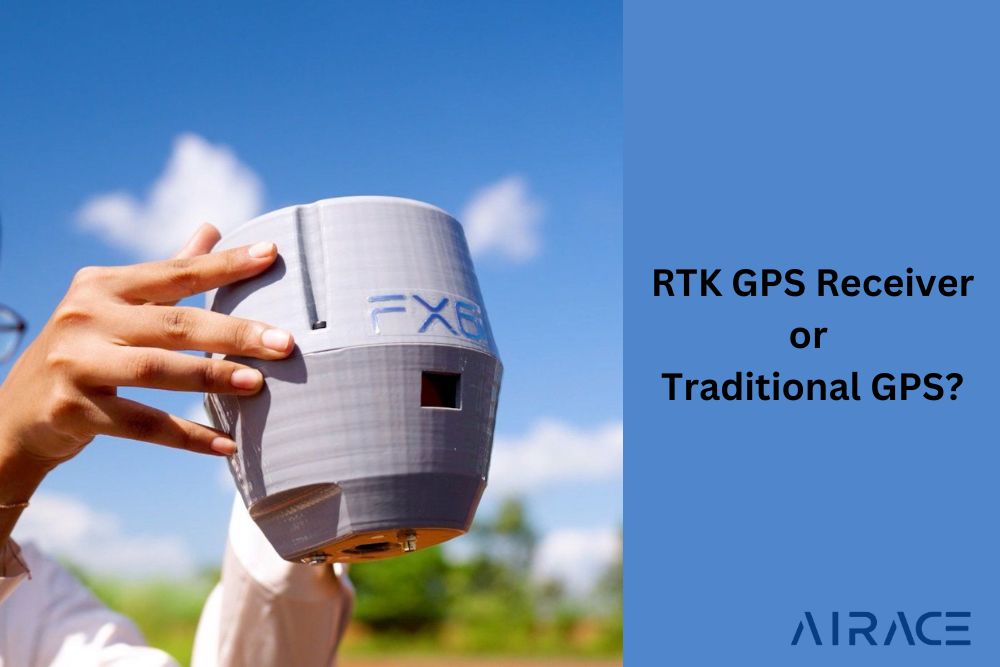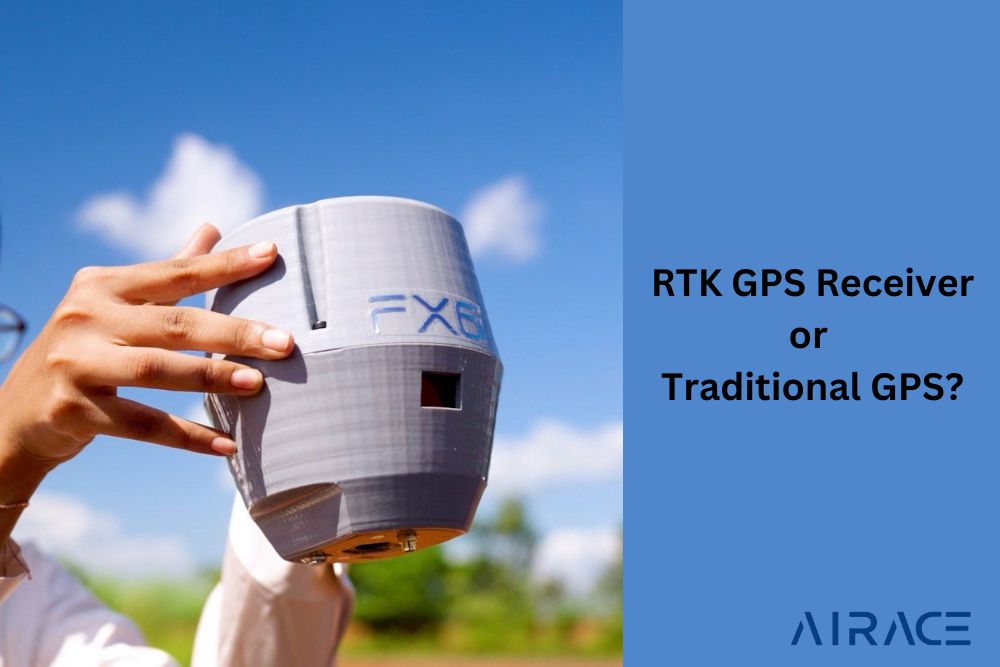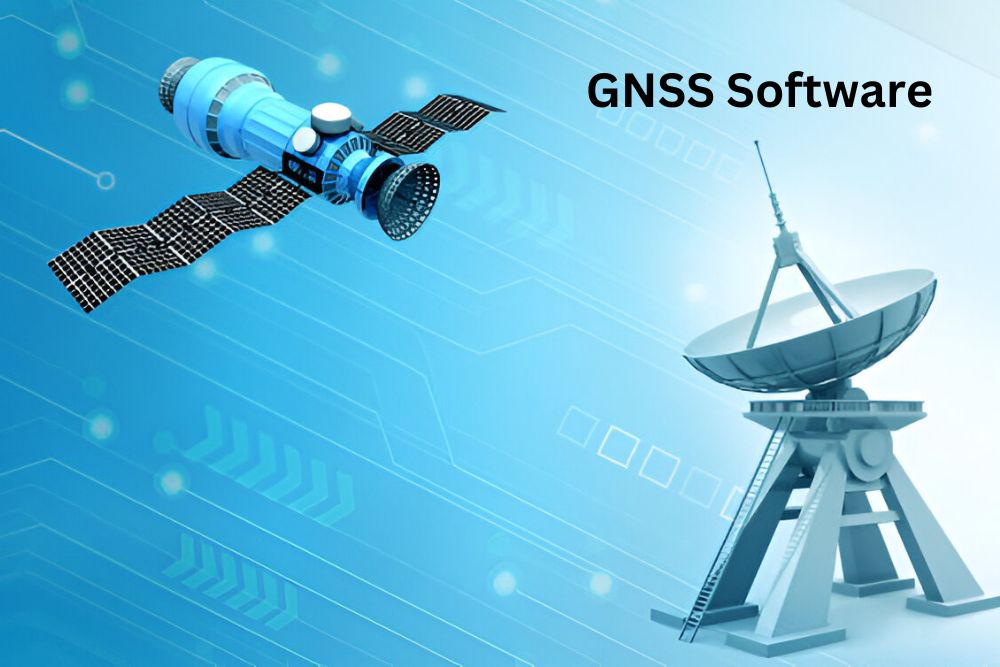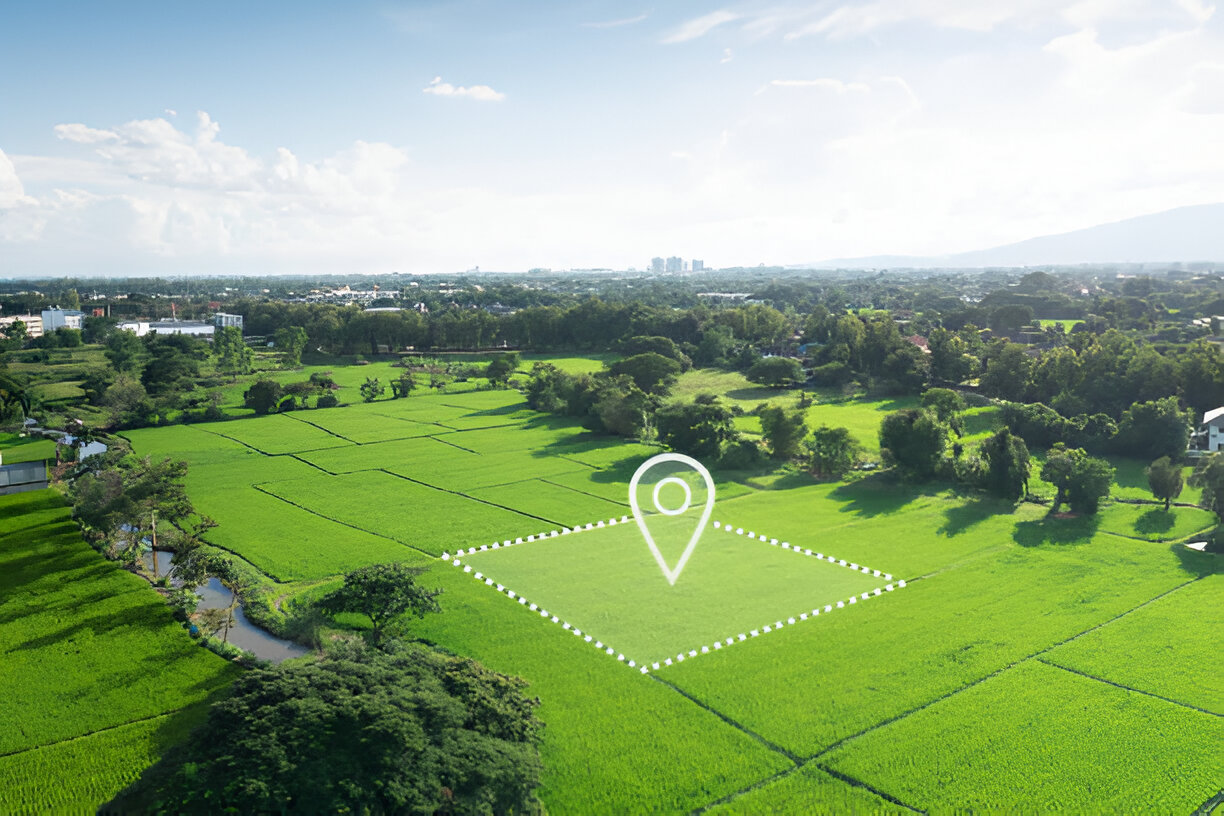
RTK GPS Receiver vs. Traditional GPS: What’s the Difference?

We use navigation tech every day. From phones to cars, GPS guides us. But what about RTK GPS Receiver? How is it different from regular GPS or Traditional GPS? Where is it used most?
Let us learn about the difference between these two systems. In this blog, you will know the difference between RTK GPS receiver and Traditional GPS.
Understanding GPS and GNSS
GNSS includes several satellite systems. These systems include GPS, GLONASS, BeiDou, and Galileo. Each system has many satellites orbiting Earth. They provide positioning, navigation, and timing services. These systems work together for accurate worldwide positioning.
GNSS receivers use satellite signals to pinpoint locations. They calculate precise positions using multiple satellite signals.
What is a Traditional GPS Receiver?
GPS receivers need at least four satellites. It measures the signal travel time to calculate its position on Earth.
Key Characteristics of Traditional GPS Receivers
- Availability: Traditional GPS receivers are found in many devices. These include smartphones, vehicles, and consumer products.
- Speed: Traditional GPS is accurate. However, it can be slow, especially in challenging environments. It is accurate but can struggle in cities or forests.
What is an RTK GPS Receiver?
They offer much higher accuracy than traditional GPS. They combine GNSS signals with real-time correction data from a base station. This correction data significantly reduces positional errors and enhances the accuracy of the location.
Key Characteristics of RTK GPS Receivers
- High Accuracy: RTK GPS is very accurate. It can be precise to the centimeter. This makes it perfect for jobs that need exact measurements.
- Real-Time Data: RTK needs a base station. The base station sends correction signals to the receiver. These signals fix errors from the atmosphere and satellite clocks. This gives very accurate positioning data.
- Application-Specific: RTK GPS is used in many precise jobs.
Differences between RTK GPS and Traditional GPS
1. Accuracy
- Traditional GPS: Offers accuracy within a 5 to 10 meter range.
- RTK GPS: Very accurate, within 1-2 cm. Essential for GNSS agriculture to avoid crop damage.
2. Signal Correction
- Traditional GPS: No real-time correction. It relies solely on satellite signals.
- RTK GPS: Uses real-time corrections from a base station, reducing signal errors.
This reduces errors caused by the atmosphere and satellites. RTK GPS is used in tasks like surveying and GNSS agriculture, where small errors can cause big problems.
3. Use Cases
- Traditional GPS: Ideal for navigation in cars, smartphones, and casual applications where high precision is not required.
- RTK GPS: Preferred for precise applications. Ideal for surveying, GNSS agriculture, and autonomous vehicle navigation.
In agriculture, RTK GPS is used in tractors to map precise planting rows. Its high accuracy helps reduce overlapping in field operations, maximizing productivity and reducing fuel costs.
4. Cost
- Traditional GPS: Generally affordable and found in many consumer devices.
- RTK GPS: More expensive due to the additional base station equipment and higher precision technology.
The cost difference is significant, which is why RTK GPS is not commonly found in consumer electronics but is instead a choice for industries that can justify the investment.
5. Connectivity
- Traditional GPS: Satellite-based, no extra connectivity needed.
- RTK GPS: Needs base station for real-time corrections via radio or cellular network.
This connectivity requirement is essential for RTK GPS receivers, enabling them to receive constant correction data. Without the base station, RTK GPS would operate similarly to a traditional GPS receiver.
How Does GNSS Receiver Work?
A GNSS receiver collects satellite signals. It processes these signals to find the user’s location.
The GNSS module in a receiver picks up signals from many satellites. This lets the receiver work in tough conditions and stay connected. Modern GNSS receivers also have software for better positioning, mapping, and data logging.
Choosing the Right GNSS System for Your Needs
The choice between a traditional GPS and an RTK GPS receiver depends on the application:
- For Casual Use: A traditional GPS receiver works well for navigation, fitness tracking, and general positioning needs.
- For Precision Applications: RTK GPS gives very accurate positioning data. This is key for surveying, autonomous navigation, and agriculture. Surveyors need precise measurements for maps and plans.
Final Thoughts
RTK GPS and traditional GPS differ in precision. Traditional GPS is good for general navigation. RTK GPS, however, is highly precise, making it ideal for industrial use. Choose based on your GNSS needs and accuracy requirements.



One thought on “RTK GPS Receiver vs. Traditional GPS: What’s the Difference?”